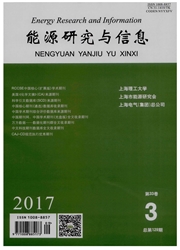

 中文摘要:
中文摘要:
LED作为第四代照明光源应用于汽车照明已经是一种必然的趋势。针对汽车照明用LED散热问题,提出了一种以铜粉烧结块为吸液芯的铜-水复合冷凝段重力式热管(HP)散热系统,并且实验研究了冷凝侧对流换热系数、LED粘结材料导热系数以及热管充液率对芯片结温的影响。结果表明:1)对流换热系数与芯片结温呈负相关,并且在对流换热系数增加到50-70 W/m^2K之间时,芯片结温下降趋于平稳;2)LED粘结材料的导热系数越大(≥100 W/m·K),越有利于降低芯片结温;3)加热功率偏小(≤3 W)时,充液率为50%时最利于降低芯片结温,加热功率偏大(≥5 W)时,充液率为60%最为合适。
 英文摘要:
英文摘要:
LED, a fourth generation lighting source, used in automotive lighting is an inevitable trend. As for the heat dissipation problem of automotive lighting LED, this paper puts forward a copper powder sintering as a wick of copper-water gravity heat pipe (HP) and experimentally research the effect of convective coefficient, coefficient of thermal conductivity and charging rate on junction temperature respectively. The results showed that: 1) convective coefficient is negatively correlated with junction temperature, and when the convective coefficient reaches to 50 - 70 W/m2K, the junction temperature gets a smooth trend; 2) the greater the coefficient of thermal conductivity (≥100 W/m· K) is, the faster the junction temperature reduce; 3) when the heating power is less than 3 W, the optimal filling ratio is 50% and when the heating power is greater than 5 W, the optimal filling ratio is 60%.
 同期刊论文项目
同期刊论文项目
 同项目期刊论文
同项目期刊论文
 期刊信息
期刊信息
